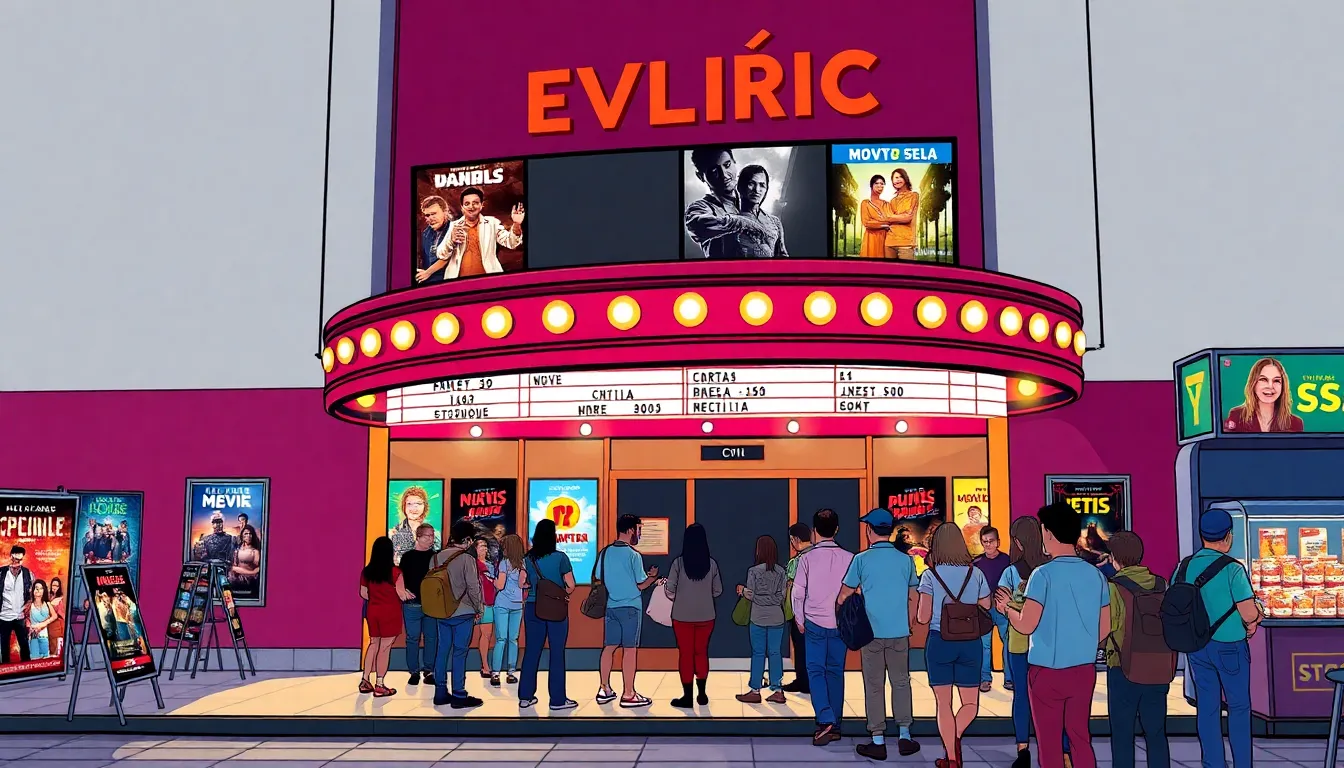Table of Contents
ToggleImagine this: you’re in a bustling Spanish-speaking country, craving a cinematic escape. But wait—how do you ask for tickets in a language that’s not your own? Fear not! Understanding the phrase “cine” can unlock a world of entertainment, from thrilling blockbusters to heartwarming indie films.
Understanding “Movie Theater in Spanish”
The term “cine” plays a crucial role in enjoying films in Spanish-speaking countries. Recognizing this word helps in navigating the movie experience.
Definition in Context
“Cine” refers to “cinema” in Spanish. Often, locals use it to describe movie theaters where various films are screened. One might hear phrases like “voy al cine” meaning “I’m going to the movies.” Contextually, “cine” encompasses both the venue and the experience, whether it’s a bustling multiplex or a cozy indie cinema. Understanding this term opens doors to discovering movie schedules, buying tickets, and discussing film preferences with locals.
Importance of Language Learning
Learning key terms like “cine” enriches interactions in Spanish-speaking environments. Knowing how to use the word facilitates communication about cinema options and enhances the overall movie-viewing experience. Students and travelers benefit from grasping cine-related vocabulary, allowing them to ask about showtimes or discuss film genres effectively. Building a foundational vocabulary encourages deeper cultural engagement and creates more memorable experiences at the cinema.
Common Translations

Understanding common translations enhances the movie-going experience in Spanish-speaking countries. Key terms can help individuals navigate their way through a cinema.
“Cine” and “Sala de Cine”
“Cine” translates to “cinema,” signifying both the venue and the film-watching experience. Locals frequently use the phrase “voy al cine,” expressing their plans to attend a movie. “Sala de cine” specifically means “movie theater,” referring to the actual room where films are screened. Recognizing these terms aids in purchasing tickets and locating showtimes. They contribute significantly to effective communication surrounding film preferences.
Regional Variations
Spanish-speaking regions may use different terminology. In some areas, “multicines” refers to multiplex theaters featuring multiple screening rooms. “Cineclub” indicates a smaller or independent film venue often showcasing art-house films. Variations exist even within countries, which can enhance or complicate the movie-going experience. Recognizing these distinctions improves cultural understanding and engagement with local cinema.
Cultural Significance
Cinema holds a prominent place in the cultural landscape of Spanish-speaking countries. It serves as a medium for storytelling and a reflection of societal values and issues.
Role of Cinema in Spanish-Speaking Countries
Cinema plays an essential role in shaping cultural identity. Films often explore historical events, social dynamics, and family relationships, fostering a sense of community. Directors like Pedro Almodóvar and Guillermo del Toro have elevated Spanish-language cinema on the world stage. Major film festivals, such as the San Sebastián International Film Festival, showcase diverse voices and talents, promoting cross-cultural dialogue. Audiences engage deeply with local productions, often resonating with familiar themes and narratives that reflect their realities.
Popular Genres
Genres vary widely, catering to diverse tastes. Comedies frequently dominate box offices, allowing audiences to escape daily challenges while enjoying humor. Dramas also hold significant appeal, often packed with emotional depth and social commentary. Thrillers capture attention with suspenseful twists that keep viewers on the edge of their seats. Animated films attract children and families, blending artistry with engaging storytelling. Additionally, documentaries highlight pressing social issues, inspiring action and awareness within communities. Each genre contributes uniquely to the cinematic experience in these countries.
Learning Tips
Understanding essential vocabulary enhances the movie experience in Spanish-speaking countries. It equips individuals to navigate and connect more effectively.
Vocabulary Building
Familiarity with key terms makes communication smoother. Memorize words like “entrada” for ticket and “película” for movie. Enhance understanding by noting phrases such as “¿Qué película ves?” which means “What movie are you seeing?” Creating flashcards can reinforce memory. Practice with these terms frequently. Engaging with native speakers can also help solidify vocabulary through natural conversation.
Practice through Movies
Watching Spanish films serves as an enjoyable learning method. Consider choosing a mix of genres, from comedies to dramas, to develop a well-rounded language base. Subtitles provide support, allowing viewers to grasp dialogue while hearing pronunciation. Taking notes on new words or phrases can aid retention. Discussing plot points with friends or language partners further deepens comprehension and promotes verbal skills. Regularly engaging with films nurtures both language and cultural knowledge.
Navigating the world of cinema in Spanish-speaking countries offers a rich experience that goes beyond just watching films. Understanding key terms like “cine” and “sala de cine” empowers individuals to engage more fully with the local culture. By learning essential vocabulary and exploring different genres, moviegoers can enhance their appreciation of the stories being told.
Cultural insights gained from films can lead to deeper connections with the community and its values. Whether it’s enjoying a blockbuster or an indie film, the cinema serves as a gateway to understanding diverse perspectives. Embracing this cinematic journey not only enriches language skills but also fosters memorable experiences that resonate long after the credits roll.




